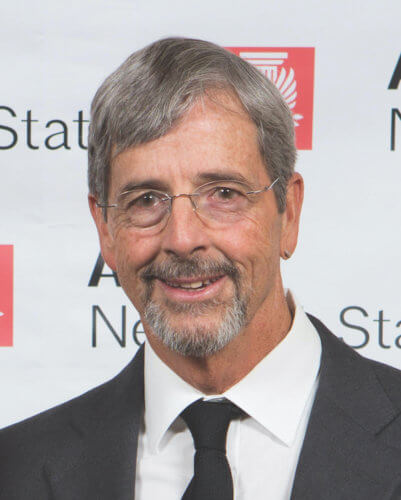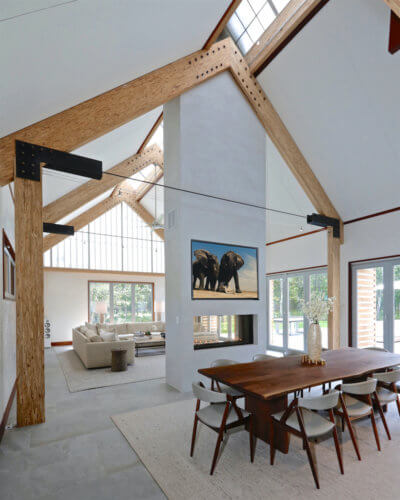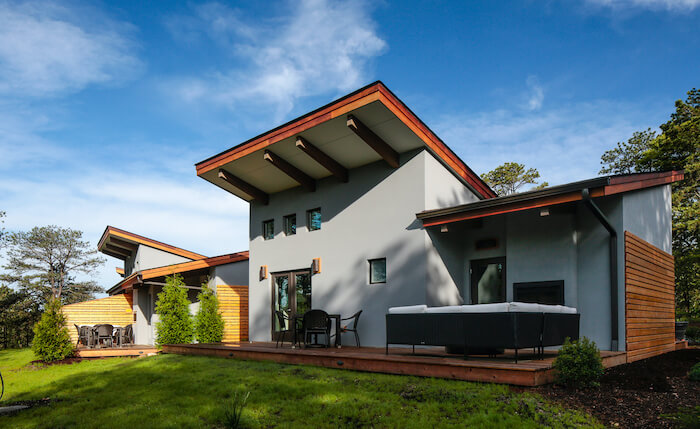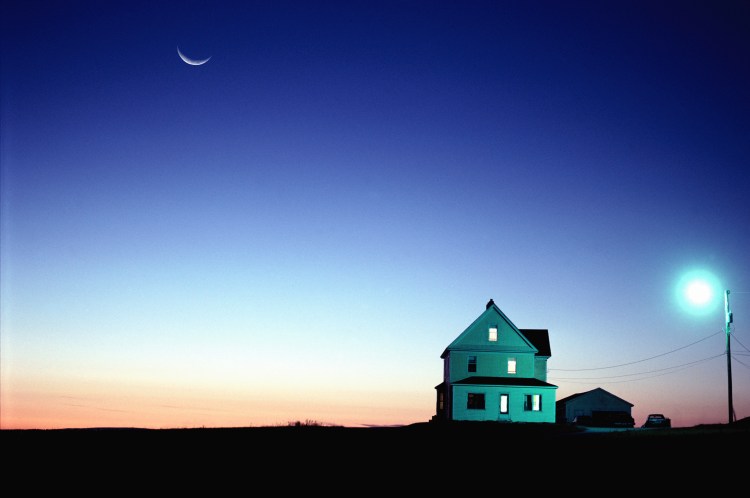“If a building can evoke an emotion, the designer can lift a person’s spirit,” says architect Richard Stott, AIA, LEED AP. “By lifting a spirit, the individual is happier, healthier and more productive.”
An award-winning architect who has given Hamptons green design a golden touch–this past March, Stott Architecture received a LEED Gold rating from the United States Green Building Council on a small residential addition/renovation for a client with extreme sensitivity to environmental and chemical toxins–Stott infuses each of his projects with tangible passion and personality. With an eye ever on sustainability and satisfying both clients and his own creative spirit, Stott discusses evoking emotions, finding inspiration, dream projects and what makes Long Island’s East End such a special place to work and create.

How would you describe your approach to design and the “art of architecture?”
Architectural design can be many things–art is just one of them. The art of architecture, to me, is the “magic” that makes certain spaces feel and/or look comfortable, exciting, calm, gigantic or cozy. The art of architecture is the thing that evokes emotions….It is always my objective to create the appropriate emotions for the spaces I design, whether its a public space like the Southampton Hospital Centennial Exhibit, or the soaring paces of a modern cathedral ceiling, or the exterior of a multi-use addition to an historical theater.
What drew you to this career, and what would you say is the biggest change you’ve seen between the day you began and this day right now?
I had a few false career starts before I chose architecture. I was a commercial pilot, I owned and operated a pottery shop, I designed and constructed large high-temperature kilns, owned a restaurant in Vermont, and worked in the trades doing electrical, roofing, framing, sheet-rock and finish carpentry. It was that last job, doing finish work directly for my architect boss, who inspired me to take the quality of my work to the next level. He convinced me to apply to architecture school, claiming that I was ‘made for it.”
When I entered architecture school, I had my ideas in my 3-D head but couldn’t draw well. I learned to draw in 3-D by hand, with no computers. I became proficient at hand drawing, but was never great at it. I always yearned for the computer that could not only show us the design in 3-D but track the data of every item in the design. The evolution to 3-D, data-driven virtual buildings is very exciting to me, and after years of prodding my draftsmen to use 3-D I am now using it exclusively and find it fascinating. My dream 40 years ago was to be able to design a virtual building just by imagining it. Right now, with virtual reality and virtual gaming tools, we are doing just that.
In addition, I get news every day on my desktop about new products, new technologies and new building systems that change the way we think about buildings and change the way we build. Using high performance building practices, I’m inspired by these products to create the most efficient buildings possible. Under the right circumstances, it is possible to create buildings that actually produce more power than they consume.
What provides inspiration for your work and vision?
Let’s face it–like art, buildings can make you feel good, or feel bad, happy or sad. They can excite you, inspire you or bring you down. When I realized how buildings can control emotions, I was hooked on designing them. There are examples of great architecture all over the world, and it is easy these days to explore and research any and every new design as well as the icons of architectural history. Visiting, working in or living in a building that moves you will change your life whether you realize it or not. I realize it–it motivates me and encourages me to raise the bar in every way to design even better than the building or design idea that inspired me originally.

What aspects of the East End make this a special canvas upon which to work and create?
Honestly, truth be told, the East End holds a secret to amazing, inspirational, world-class architecture.
The secret is…MONEY!
There are few places on earth that offer so many opportunities for architects from around the world to sketch their ideas in brick, mortar, wood beams and plaster. The diversity of design and style is astonishing on the East End, and the success and failures of these mostly residences are all part of the Hamptons Story. The Hamptons includes glorious waterfronts, expansive rural views, forested hobbits and hidden treasures, but it is the abundance of money that drives the creative experiments that we see in our communities. Personally, I have been focused on helping folks who normally would not be able to afford an architect. It hasn’t made me wealthy, but I’m as rich as I can be.
Tell us the best piece of advice you have ever gotten, the most memorable lesson you’ve learned, when it comes to architecture.
I attended a lecture in architecture school deliver by John Lautner, a modernist architect from California. As we sat in the lecture hall, he asked attendees to look around them and pick an object. He then told us all to redesign the item we picked, in our minds eye, in five seconds. He taught me that day that every item we use can be improved through design, over and over again–everything. So there is never an excuse to have nothing to do, and a designer can work as long as it brings gratification, until we’re too old to do it.
What is your dream project?
The next one.

Let’s play a little word association. Share the first thing that comes to mind when you hear the below word:
Space: A volume to be defined.
Style: A label created by association. Design elements that categorize the creation and limit creativity into a conforming set of parameters. A modernist style cannot be a traditional style, but a traditional style can be modern. Style is a word smiths’s career, and in some cases, an architect’s ticket to fame. I believe that a successful building defines its own style and there is no need to pick one out.
Sustainability: A concept that should be included in every building design for every single item and every single one of the approximately 2,000 decisions that must be made regarding the health, safety and welfare of the people who use that building.
Design: Making your idea understood.
Innovation: To create something unique that benefits something else.
Community: A close group of people focused on a particular subject.
Preservation: A single word that requires volumes to explain.
Collaboration: An imperative necessity in any construction project.
Legacy: The things we leave behind when we check out and I don’t mean your phone charger at the hotel room.
East End: 1) One of the most beautiful areas in the world. 2) An overvalued, under-zoned playground for the wealthy. 3) A perpetual traffic frustration caused by unsustainable design practices and poor government planning.






















